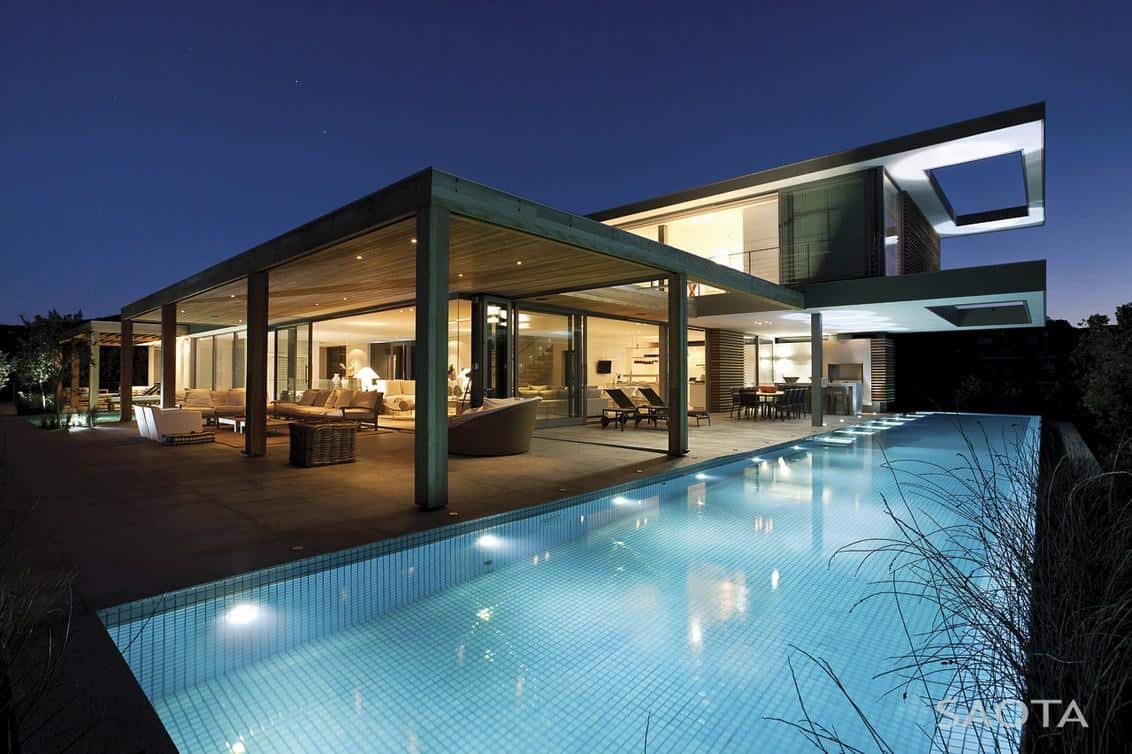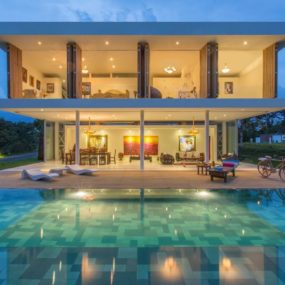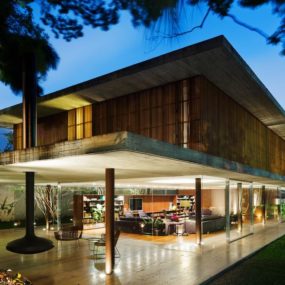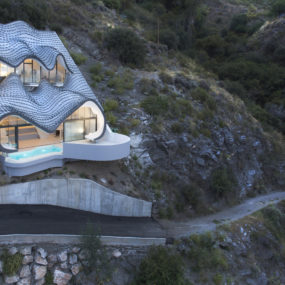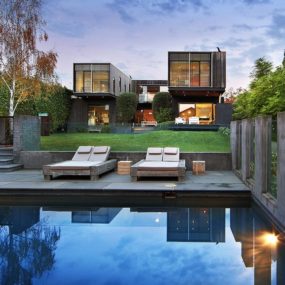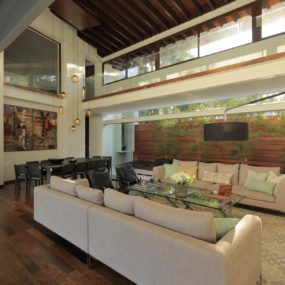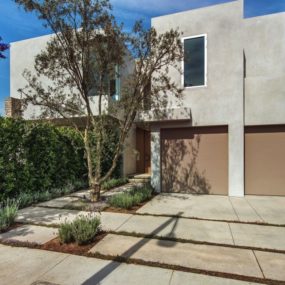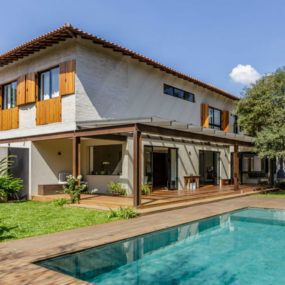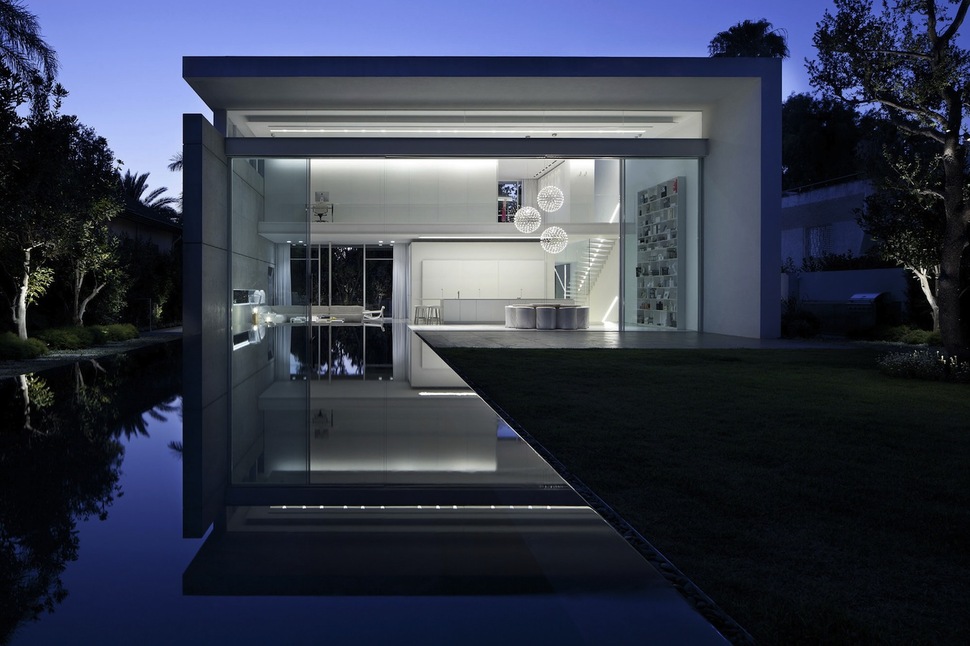
Designed by prolific Israeli architect Pitsou Kedem, this house in Ramat HaSharon (a small city just outside of the bustling metropolis of Tel Aviv) is a spacious and elegantly impressive dwelling for a family seeking an outdoor connection with a nod to privacy. With an exterior design dominated by square corners, white paint, and massive glass panels, the home has all the building blocks of minimalism, executed brilliantly. At the front, large privacy walls keep prying eyes out, allowing for an open-format yard on that side accessible from a number of rooms. At the rear, a single massive facade keeps watch over the lawn, with all the home’s public rooms present. Everywhere you go around the house, an great attention to detail and a thoughtful design philosophy is very evident. This isn’t just a standing modern box; it’s a stunning example of minimal architecture principles done right.
Inside, the house is generally divided into two sections. At the rear, a single open public room provides amenities for daily activities and social gatherings with two-story ceilings overhead. Nearer to the front, sideways-facing bedrooms look out over the entry courtyard, many with their own doors to the exterior. The only exception to this divide is the placement of the master suite, which occupies a third floor all its own above and behind the living area in the main wing. This separation leads to an isolated, powerful, and luxurious atmosphere for the master rooms, placed over the rest of the house.
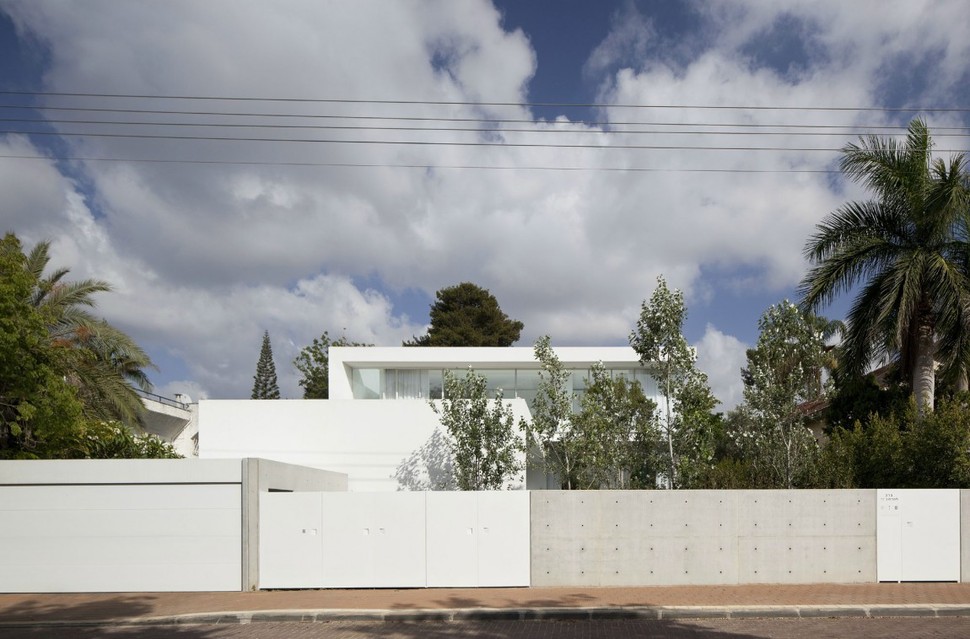
Only a glimpse of top-floor glass is visible from the street at the front of the dwelling, where a long, low barrier wall borders the property and windows face sideways towards a courtyard instead of outward towards the roadway. This allows the design of the abode to include as much glass space as needed without exposing those within to the view of their neighbors.

Once inside the property walls, a grassy front yard is revealed, framed as a courtyard by an L-shaped joint in the home’s floorplan. The portion of the dwelling which juts out towards the road is two stories, while the front-facing section is significantly taller, at an impressive three stories.
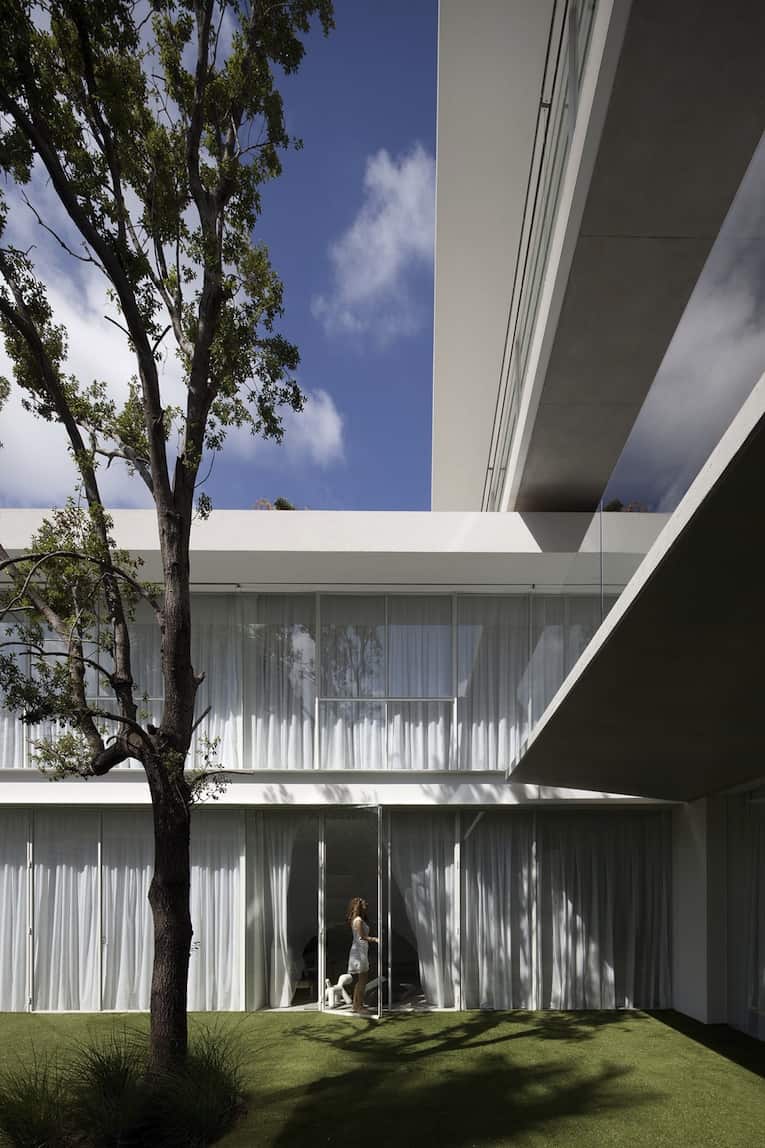
The yard is accessible from a number of points in the house, including directly from bottom-floor rooms in both wings. Once outside, you can enjoy the yard or relax under a shade-casting roof overhang.

The lowest floor of the house is sunken into the ground, acting as a partial basement as the terrain around it moves upward moving back through the house to its rear lawn.
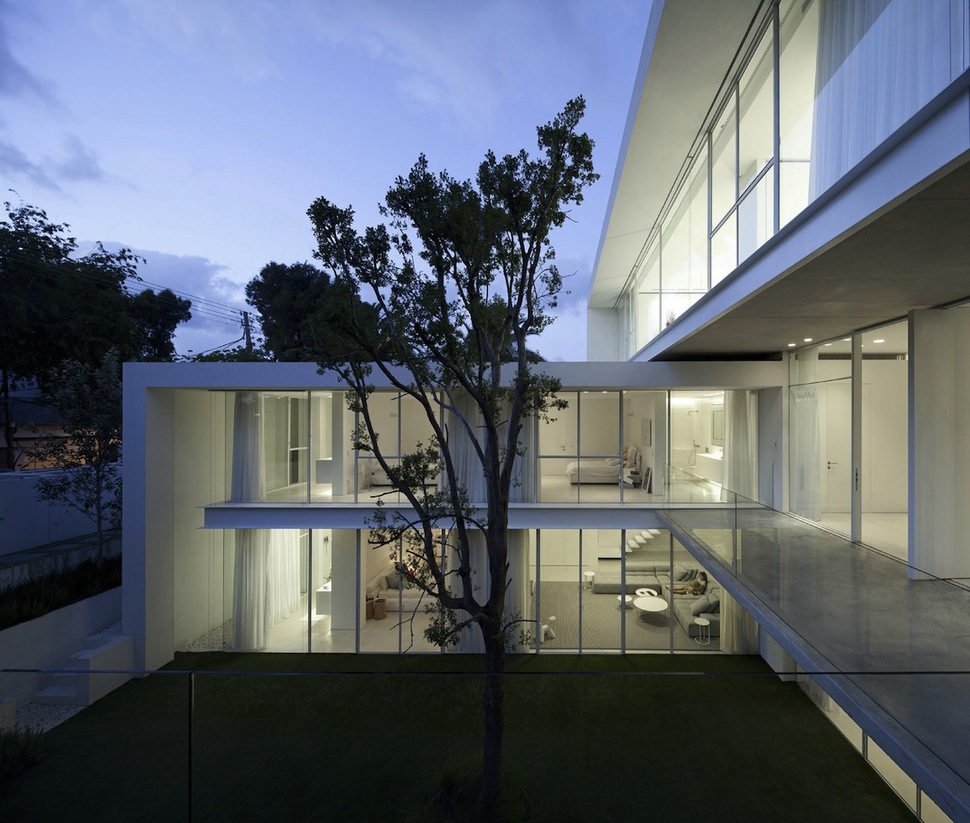
A single tree is planted in the center of the front courtyard, providing a visual focal point central to both parts of the house. The roof overhang above the first floor creates a deck on the second level with no banister, further expanding the outdoor areas of the design.
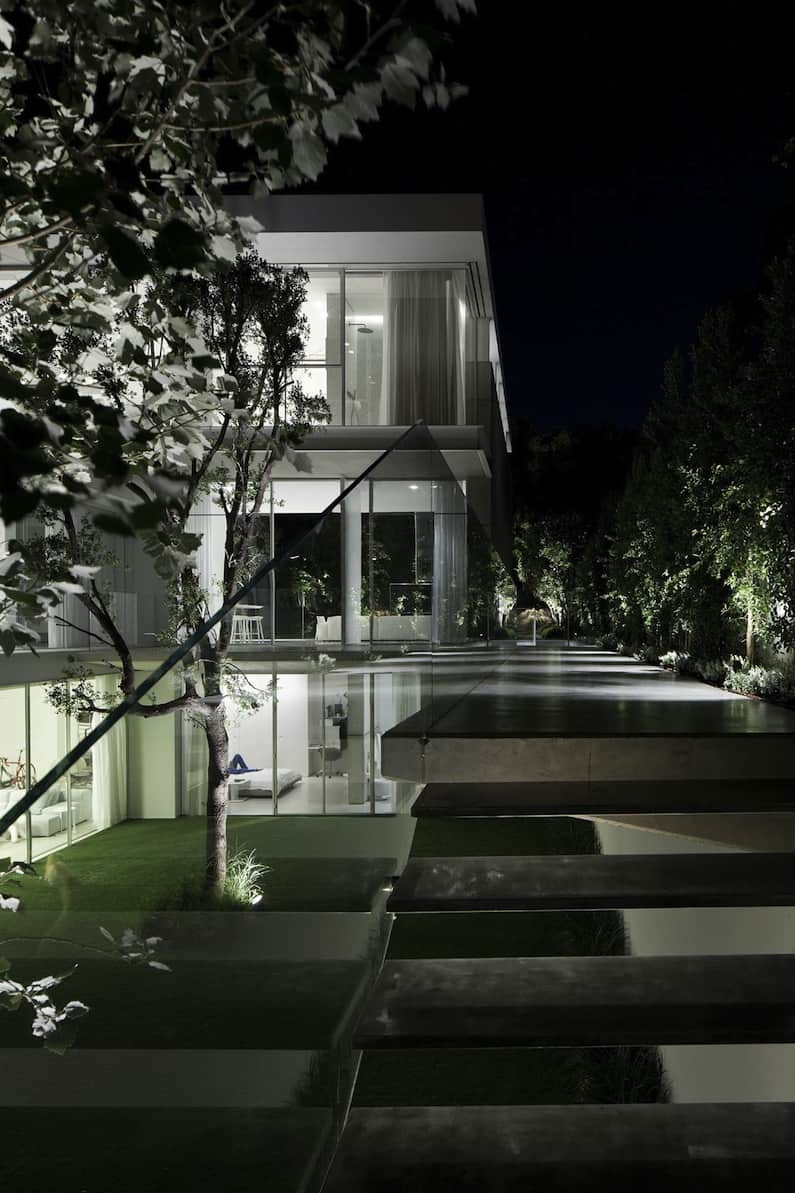
From the roadside pedestrian gate, visitors can choose to descend into the front lawn, or walk a short flight upward towards the rear, where the lawn is a full floor higher than it is here.

Beyond the outer walls of the property, a line of trees on the lawn help to block the upper portion of the house from the sight of those on the road or in other nearby homes.
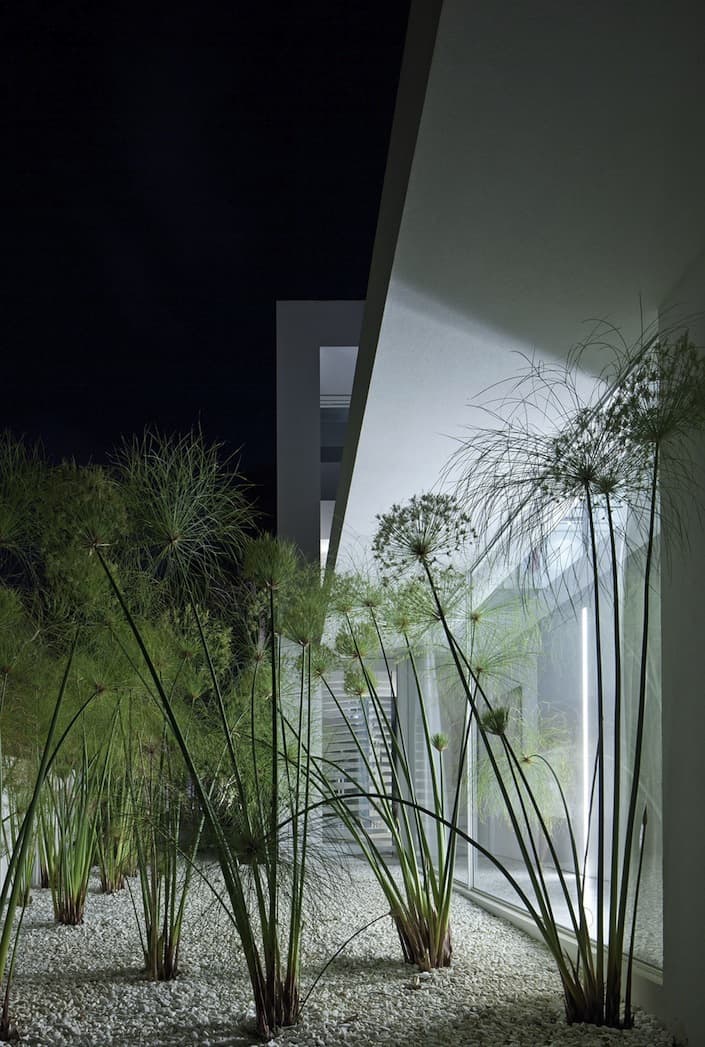
At some edges of the home, planted garden areas help to obscure the view inward while allowing for full window walls to continue to provide light to rooms and halls.
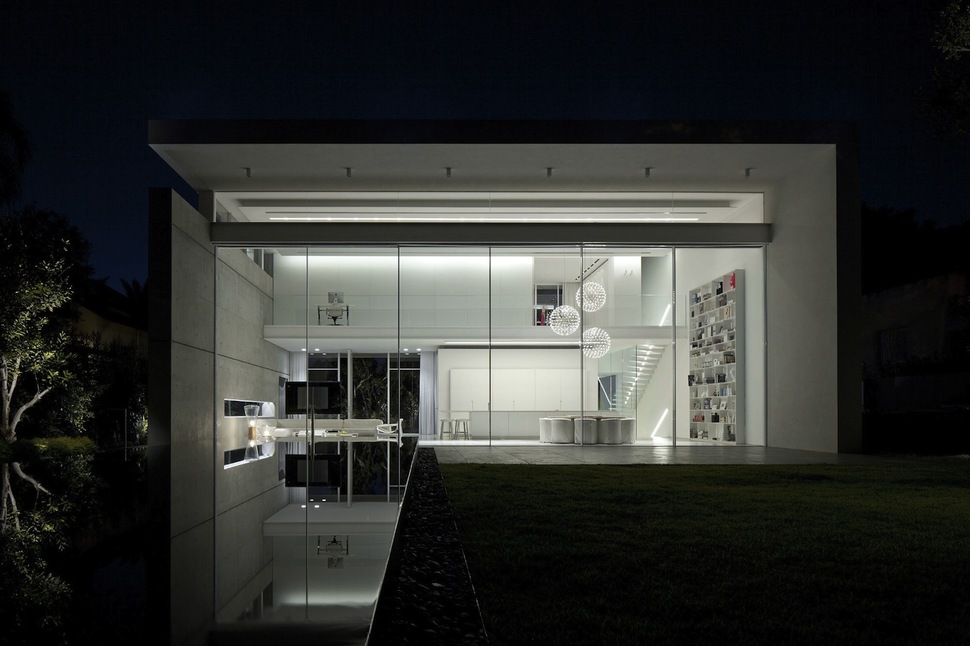
At the house’s staggering rear edge, a pool casts a still, perfect reflection of the lights within by night, creating an illusion that the home is a large square building built partially underground in a physically impossible configuration.
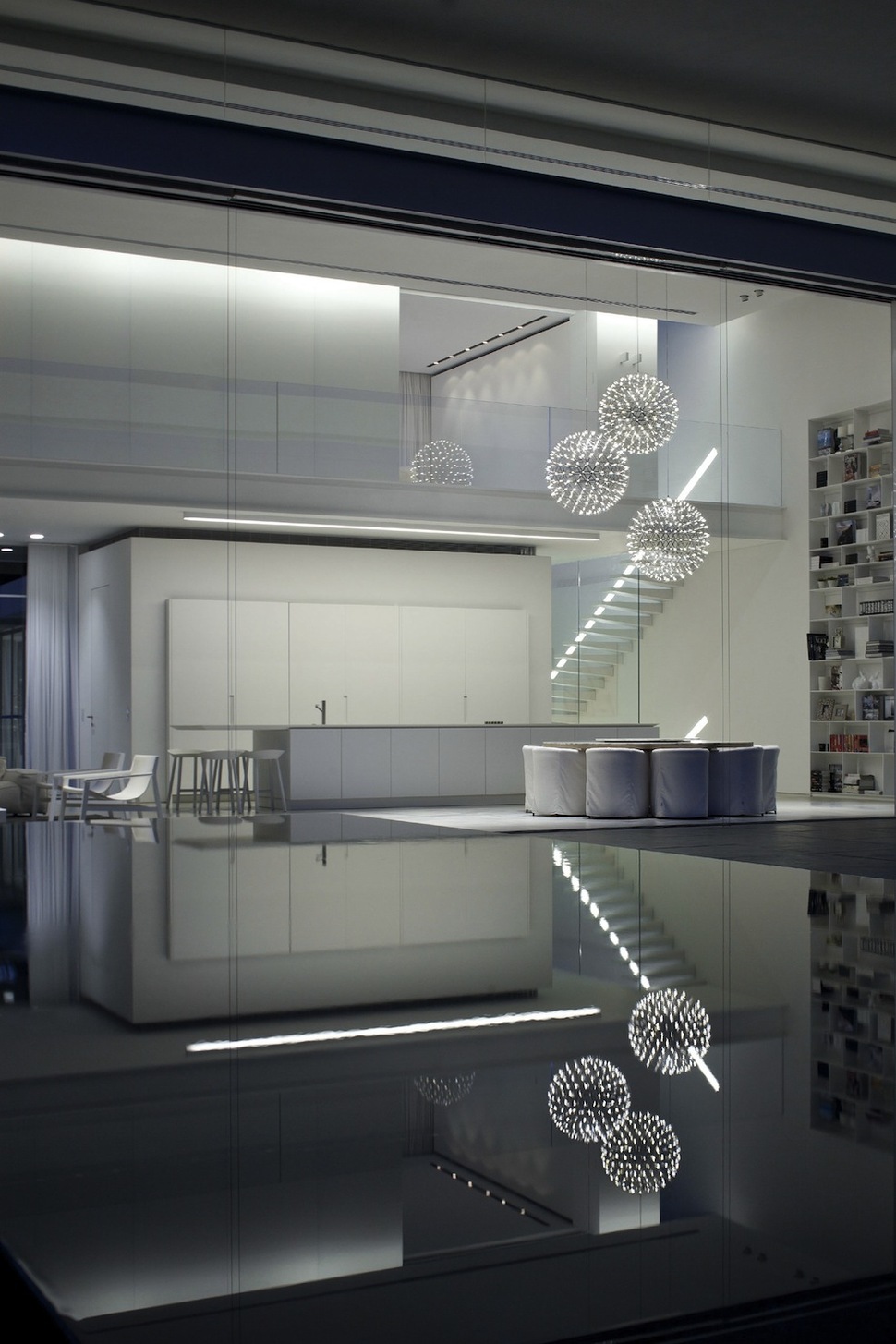
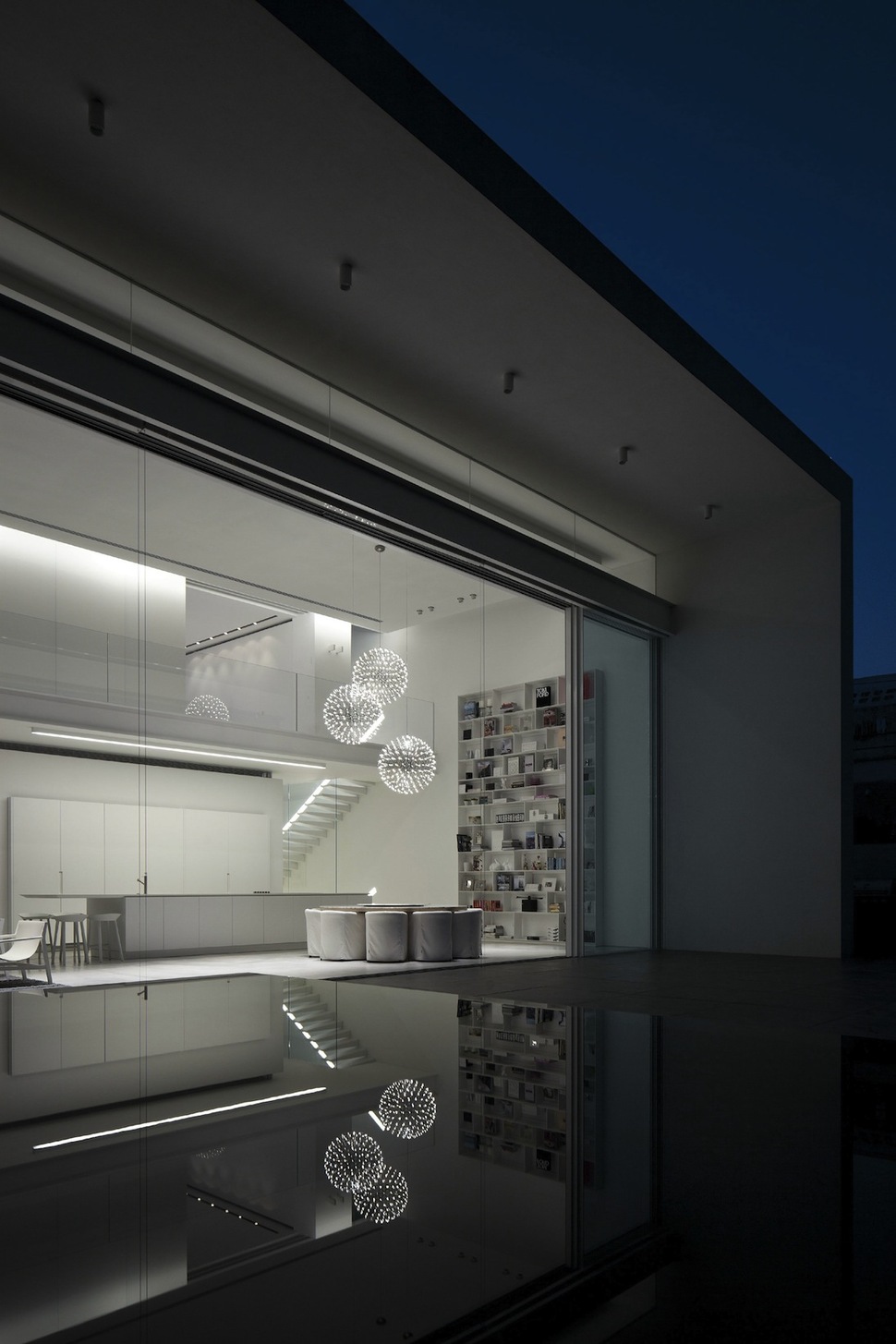
The rear of the house is a true feat of residential engineering, with huge glass walls which slide away in a manner similar to the doors of an airplane hangar to open up its massive public spaces to the outdoors.
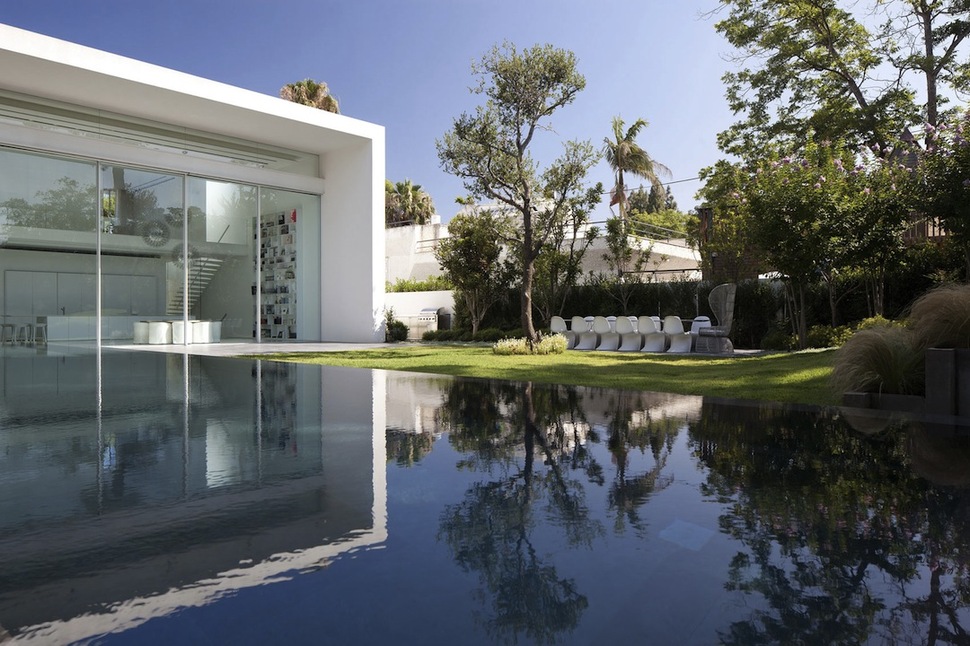
The rear lawn is divided equally between the long pool, which is raised above ground level in a dark grey stone basin, and and a grass lawn complete with gardens, an outdoor dining space, and a deck off of the kitchen.
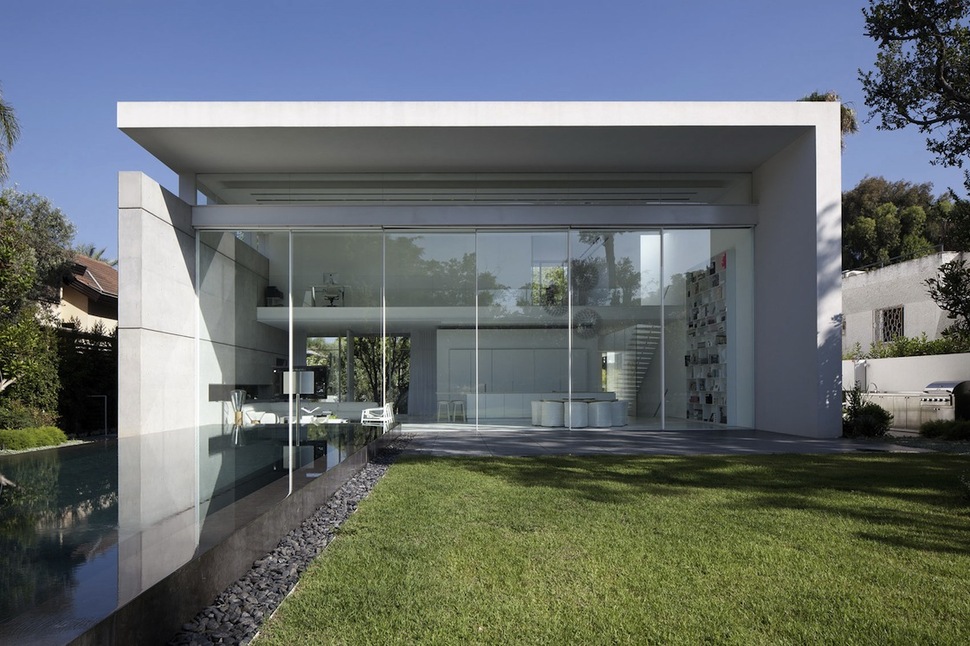
From the back lawn, you can see the living room, kitchen, dining room, office, main hallway, and even the front lawn of the house. The two floors here are the upper two levels of the house’s front three, with a few additional rooms below it fronting the sunken lawn on the other side of the building.
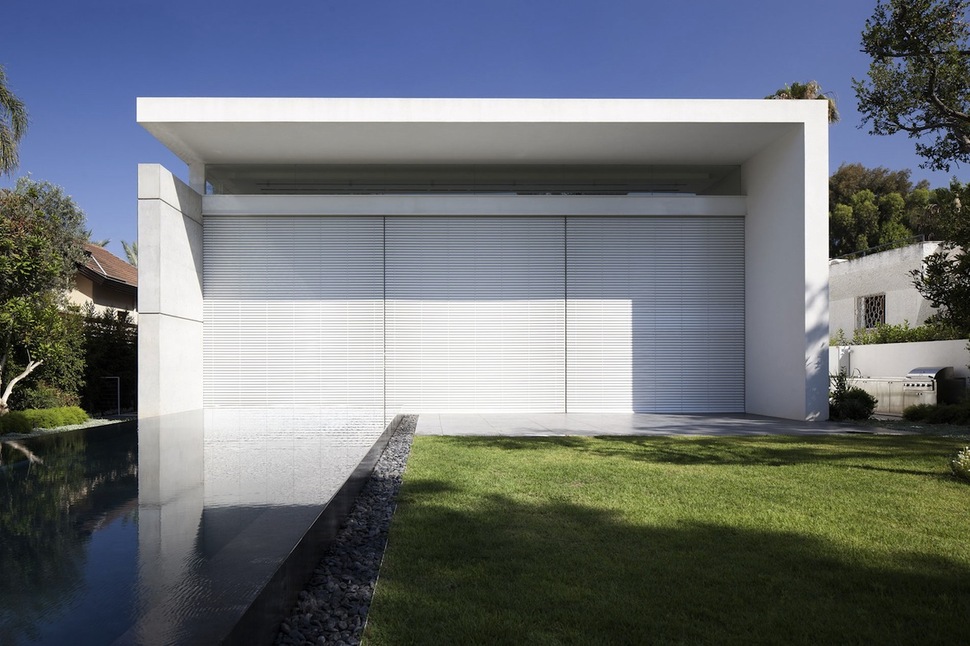
When the sun gets too bright or privacy is desired, the entire rear facade of the residence can be closed off with a system of electronically-lowered blinds, with only a sliver of glass at the top to let indirect light in.
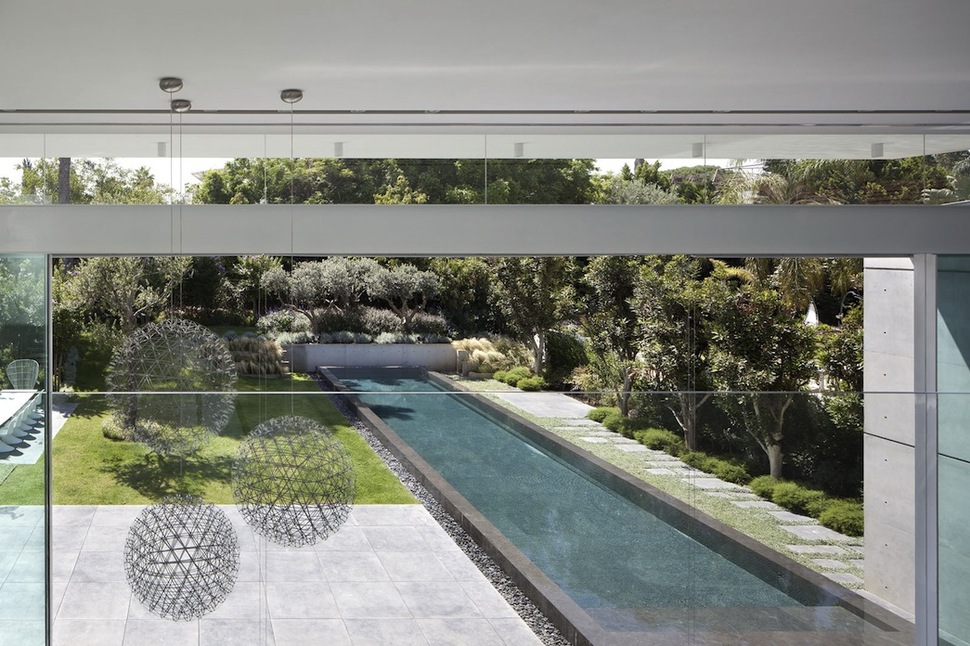
At the sides and back of the yard, a thick layer of tall vegetation takes the place of a simple fence or wall as a creative and effective barrier to the gazes of homes nearby, even for the second floor.
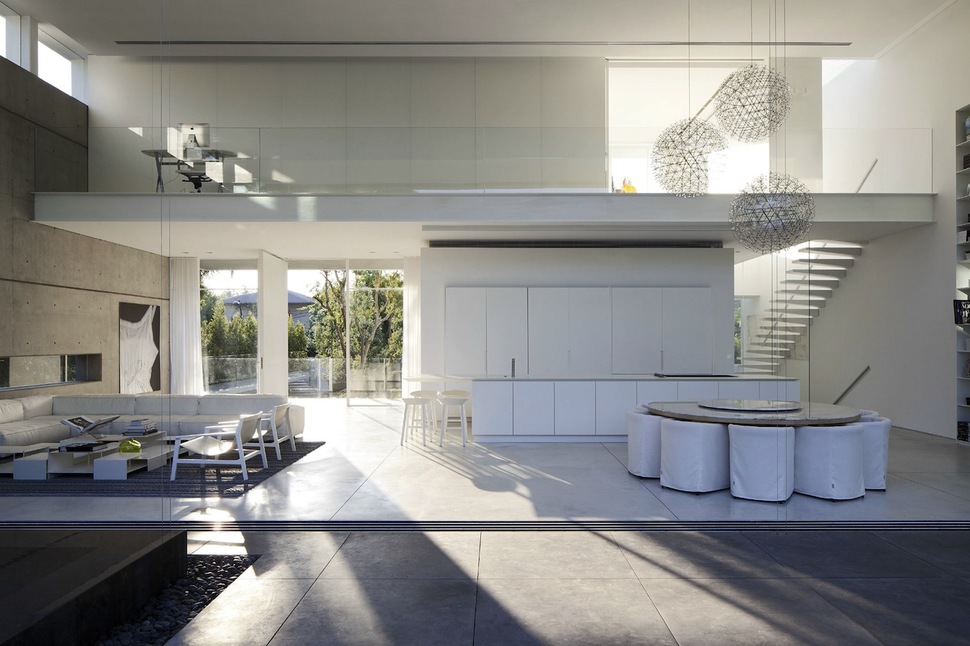
The ground floor of the house at the rear contains its main spaces for entertaining and gatherings, with a high uninterrupted ceiling overhead at roof level. The area contains two distinct sections: a living room and a kitchen/dining room combination.
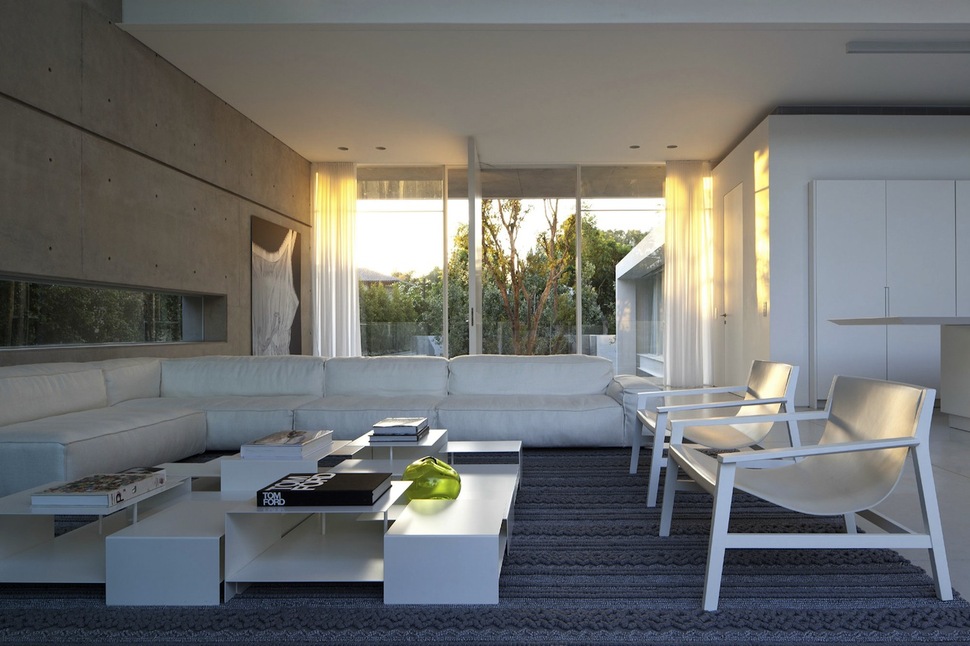
The living area is the only room of the house with direct views out three of its sides, with its furniture the hangar-style windows at the rear of the dwelling. Each side wall in this main room is set apart in its own way: this one is finished in smoothed concrete instead of painted white.
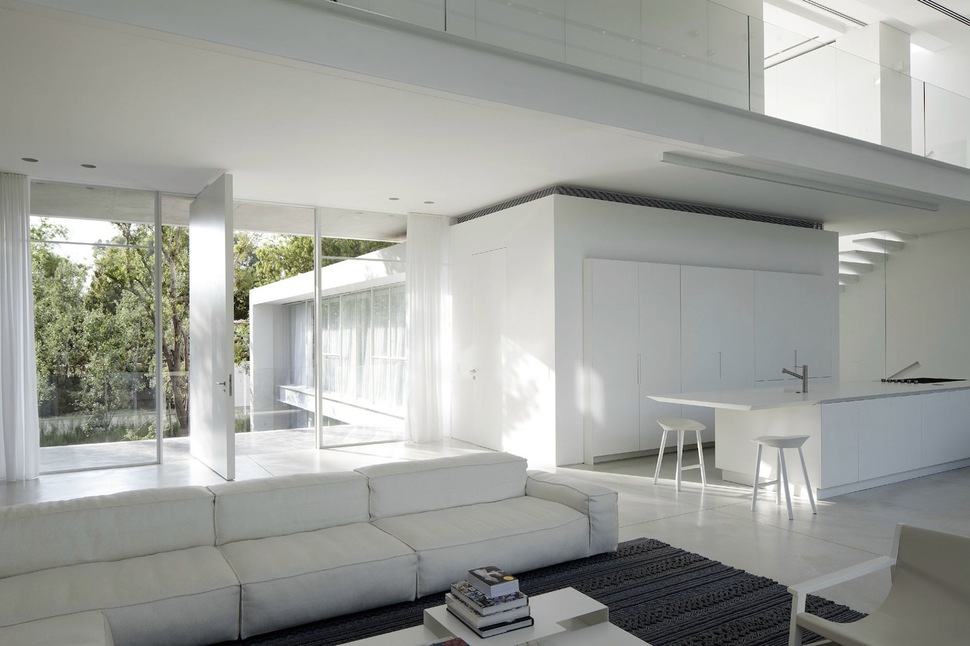
A single-story window wall provides views towards the front of the abode and direct access to the second-floor deck, and a thin window along the grey side wall brings in even more ambient light.
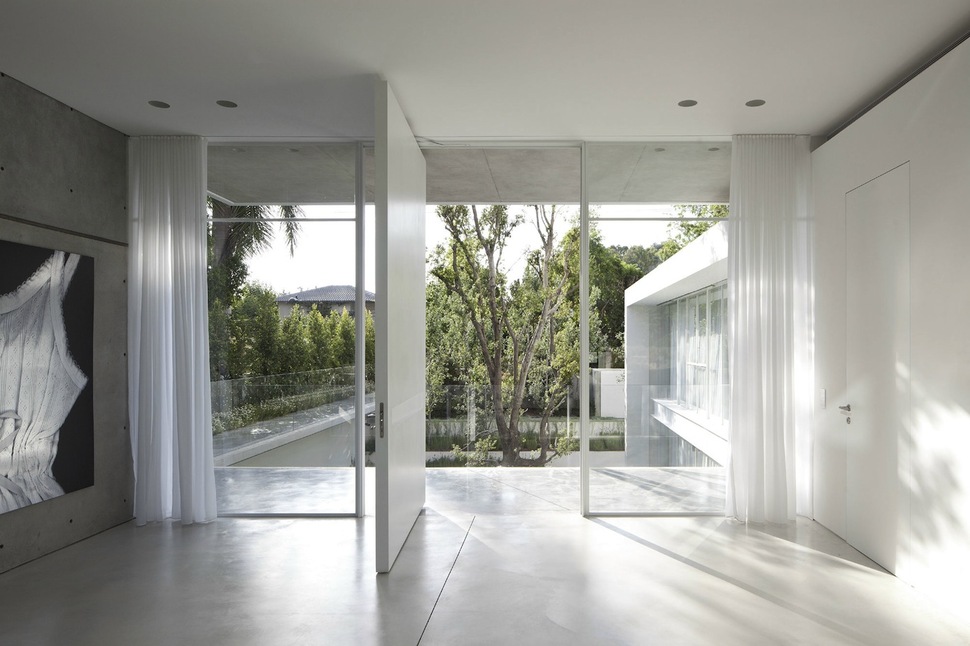

The kitchen area is quite minimal, with closet-style cabinets set symmetrically behind a pure-white island counter interrupted only by a sink and stovetop. In front of it and to one side, an unconventional circular dining table with close-clustered captain’s chairs completes the space.
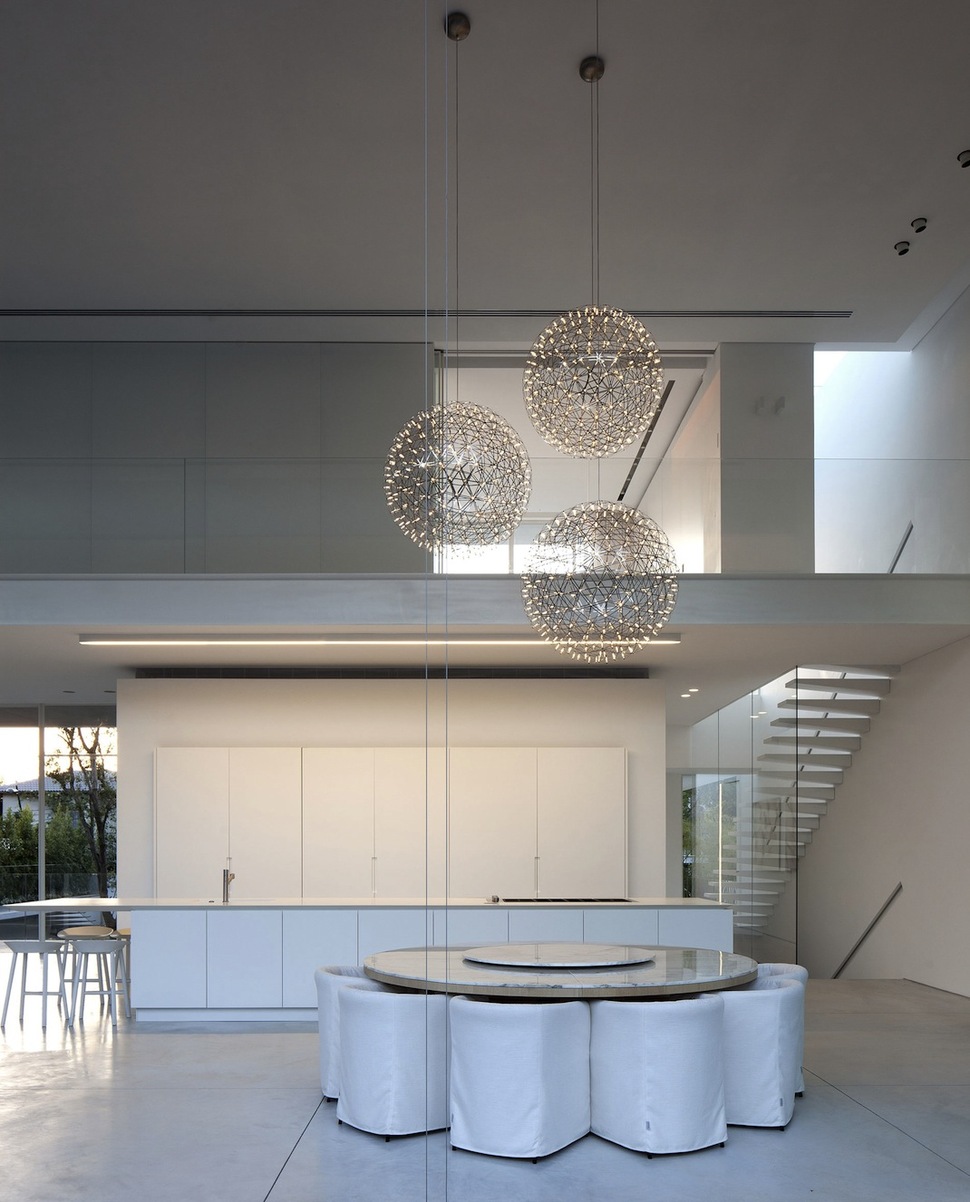
The lighting above the dining table is in the style of an art deco chandelier, made from three suspended orbs with endpoint bulbs. The system of second-level deck and mid-room chandelier is reminiscent of the lighting of the grand entry to many famous halls of music.

At two-story bookshelf at the dining room’s end is mostly there for decoration (you’d need a ladder to reach anything displayed near the top), giving a colorful contrast to the pure-white wall behind it. Like the house’s overall shape, the shelves of the bookshelf take on rectangular forms of different length, guided by right-angled constraints.
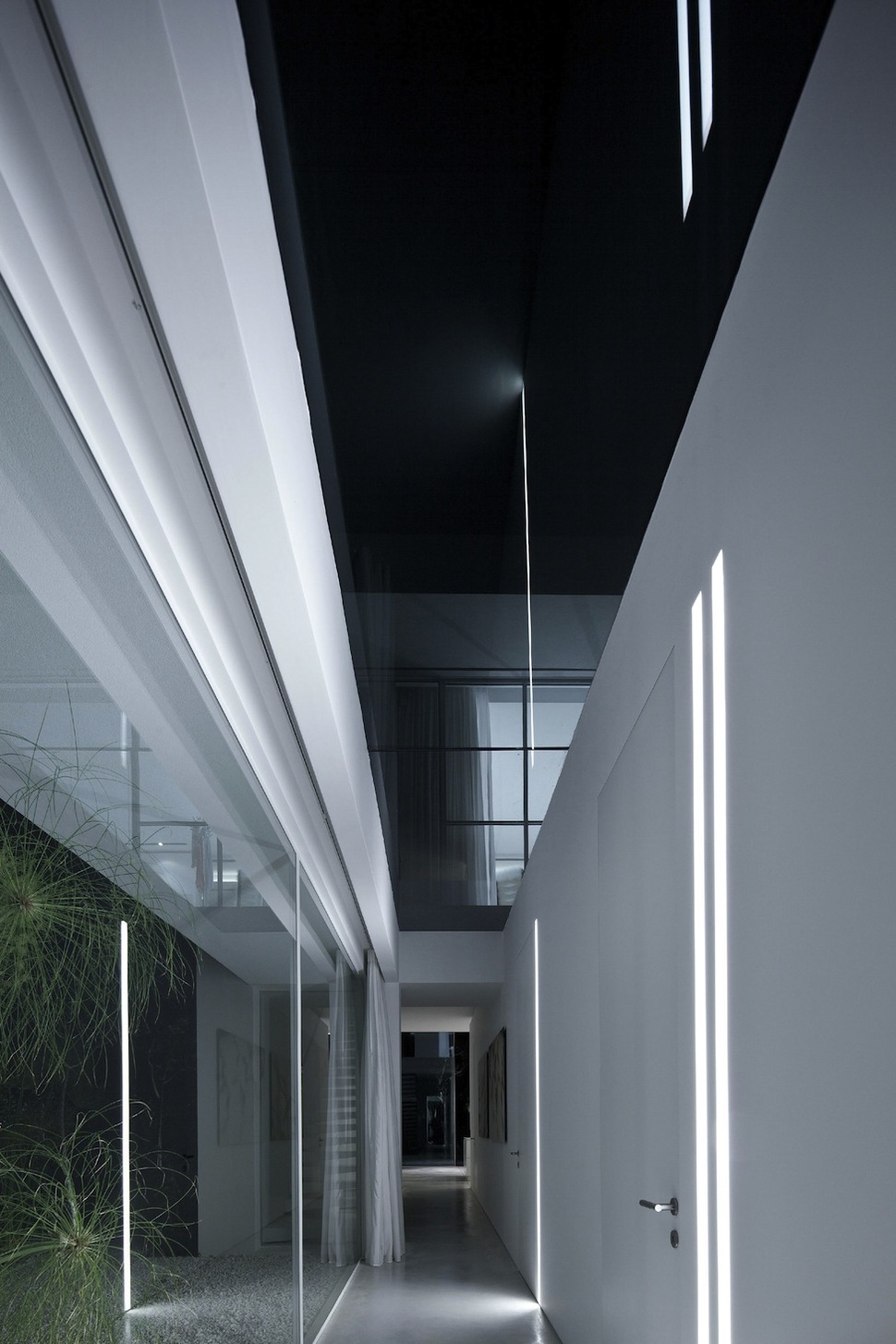
Down one of the hallways which runs through the home’s private wing, the ceiling overhead is completely replaced with a glass skylight panel, giving sky-blue views by day and subduing the white walls by night.
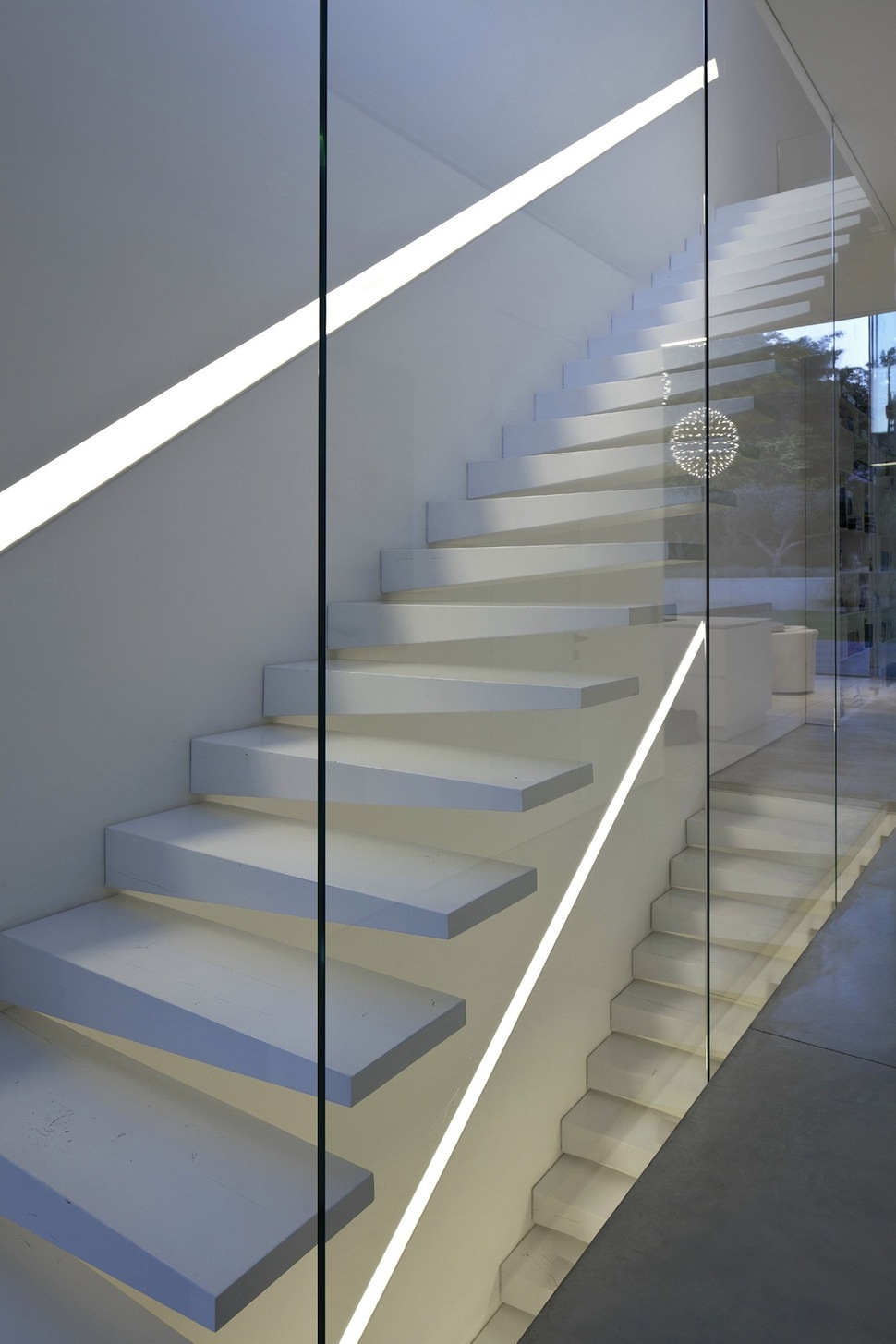
Like the outdoor staircase seen earlier, this one uses a glass wall as a frame instead of a traditional banister. The banister is actually formed from indents used to mount a set of soft white lights which run parallel to the rise of the steps.
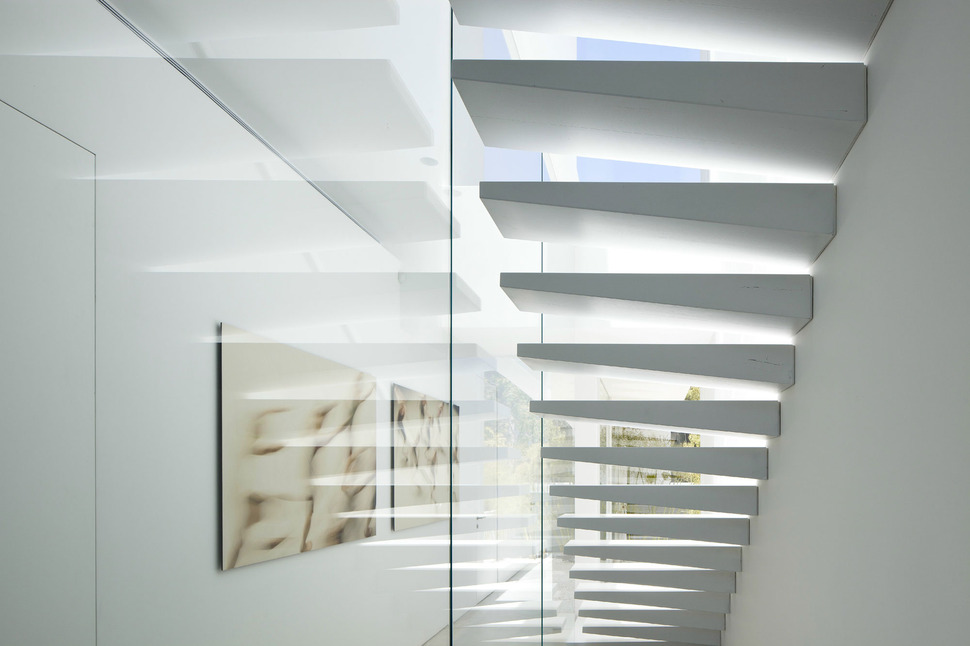
The steps themselves are asymmetrical and done in floating style, becoming thinner as they move towards the glass wall. This allows the staircase to be mounted against a structural wall at the thick end while maintaining minimalism near the see-through glass.
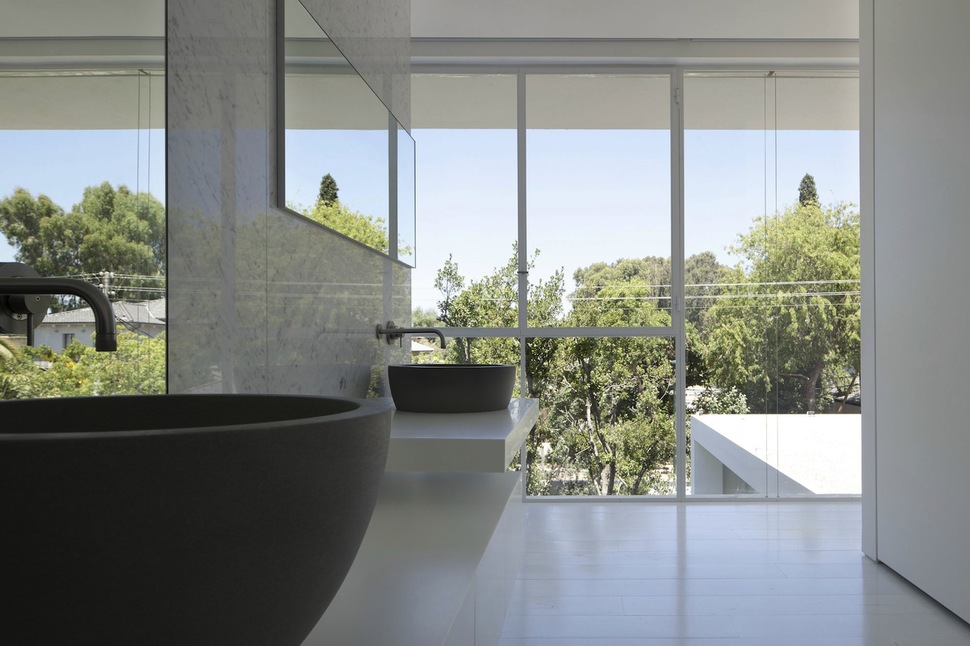
On the top floor, a splash of marble forms a wall behind the master bedroom, serving as the backsplash for his and hers sinks. Even the bathroom has its own view of the property below, protected by the walls and plants at the boundary of the lot and by roof extensions on lower levels.
Pitsou Kedem
